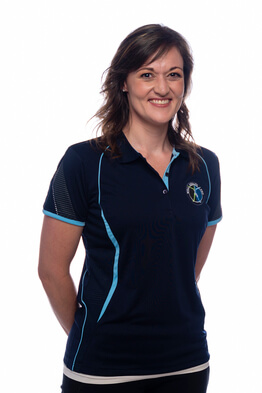Electrotherapy is the use of electrical current as a form of treatment. Applying electrical energy to your body’s tissues, has therapeutic effects like relieving pain or strengthening muscles. If you’ve ever been to a physiotherapist, chances are you’ve experienced some form of electrotherapy. Anything from a soothing, tingling effect, to a stronger pulling feeling as the electrical currents get to work on your tissues. There are many different types of electrotherapy treatments available, and their use varies widely between different physiotherapists.
Unfortunately, some people get only electrotherapy and nothing else when they see a bad therapist. Whereas the best way to use electrotherapy is to combine it with other forms of treatment for a bigger effect. The skill of using electrotherapy is to know which type to use and when. And that will be different for each person.
What exactly is electrotherapy?
Electric current is a stream of charged particles, electrons, moving through a conductive material, like an electrical wire. You need a power source, like a battery, to create this current. The current will then move from one point to another through the wire.
The same can be said of electrotherapy devices. All electrotherapy machines need to be connected to a power source, so that current can move through the wires, towards the electrodes. Electrodes are made to connect to something that does not conduct electric current, like the tissues in your body. Usually, they stick to your skin, and this way the current can move through your skin from one electrode to the other.
Many people think of electrotherapy as being shocked by electricity, but luckily these machines are made to apply the current at a very safe and measurable intensity. Usually, it feels much too comfortable to think of it as shocking yourself.
There are many forms of electrotherapy, like shortwave, shockwave, TENS, microcurrent, electrical stimulation, interferential therapy. Each has different qualities and will feel different. Laser and Ultrasound are often thought of as electrotherapy, but actually they apply light or sound waves to your tissues, not electrical current.
In this article you can read more about TENS, interferential therapy (IFC) and electrical muscle stimulation (EMS). These are the forms of electrotherapy you can expect to get at Well Health Pro, as integrated into your treatment sessions when necessary.
Why do we use electrotherapy?
The principle behind electrotherapy, is that applying a low power or energy to the body’s tissues can enhance the natural ability of the body to stimulate, direct and control the healing and restoring processes. It is like aiming to activate your cells, and to stimulate them into a higher activity level. Thus, you are still using the natural resources of your body to do the work, the electrons are merely the catalyst to trigger the change.
By doing this, you can achieve pain relief, stimulate muscle movement and improve tissue healing. And it is a non-invasive form of treatment with little to no side effects. That is why it is used by physiotherapists to treat various musculoskeletal conditions. Our physiotherapists are qualified to provide all forms of electrotherapy and they will be able to adequately determine if it will benefit you.
Healing Effects of Electrotherapy
• Eases pain
• Increases blood flow
• Decreases swelling
• Reduces inflammation
• Stimulates a muscle contraction
• Prevents muscle weakness
• Assists with rehabilitation
• Maintains mobility
• Improves blood supply to injured tissue
• Breaks down scar tissue
• Decreases muscle spasm
“Used at the right place, at the right time for the right reason, it has phenomenal capacity to do good.”
The Technique
An electrotherapy device consists of a battery-powered machine, connected to wires and electrodes. The adhesive electrode pads stick to your skin and once the machine is turned on, a mild electric current is sent to the skin and through your tissues via the electrodes. This current can be applied at varying intensities, according to the comfort of the patient.
Electrodes are placed in different ways, creating complex patterns of stimulation. Typically, the electrodes are placed over the sore area, but it can also be effective when it is placed on the pathway of the nerve or other areas close by.
These days you get handheld, wearable devices that you can strap directly to your leg, arm or back. It won’t even be visible under your clothing. This will especially be possible if you have your own unit at home. Some people find it comfortable to have it on for hours, or even overnight. Certain conditions we’ll advise you rather buy your own TENS unit.
Rent a TENS Unit before you BUY
We encourage patients wanting to buy an electrotherapy device to first test out different machines and electrode placements to experiment with what works for you. At Well Health Pro, we rent TENS and EMS units for R300 per week, why not give it a try?
Contact us if you would like more information on this
Keep in mind that physiotherapists use electrotherapy as part of their treatment, in conjunction with other treatment techniques. The aim of your treatment should not only be to relieve your symptoms, but it should also look at the root of the problem and how you can improve as a whole. The electrotherapy treatment itself tend to last anywhere between 5 to 20 minutes, depending on the size and depth of the injury being treated. This time will be incorporated into the overall time of your treatment session.
Types of electrotherapy
TENS, electronic muscle stimulation (EMS) and interferential therapy might come from the same machine, but will feel different and have different effects. Let’s discuss them separately:
Transcutaneous electrical nerve stimulation (TENS)
The type of stimulation delivered by the TENS unit aims to excite and stimulate the sensory nerves through a mild electrical current, and by so doing, activate specific natural pain relief mechanisms.
There are Two Types of Frequencies that can be used:
- High Frequency (90 – 130 Hz)
When it is set on a high frequency, TENS will stimulate certain ‘non-pain’ nerve fibres to send signals to the brain, to block other nerve signals carrying pain messages. High frequency stimulation, sometimes called “conventional TENS” feels like a very manageable tingle/prickle. It can be used for hours, but the pain relief lasts for a shorter period. - Lower Frequency (2 – 5 Hz)
If TENS is applied at a lower frequency, it stimulates the production of endorphins, which is natural pain-relieving hormones. Low-frequency stimulation, sometimes called “acupuncture-like TENS”, can feel more uncomfortable. Usually, it is used for around 20-30 minutes, but the pain relief lasts much longer. - A third way of using TENS, is to use both high and low frequency stimulations in a “burst mode”. When the machine is on, it will deliver pulses of different frequencies. For some patients this is by far the most effective approach to pain relief, though it might feel less comfortable as a grabbing, clawing or muscle twitching sensation.
Interferential current (IFC)
Interferential current (IFC) is a deeper form of TENS. Interferential current uses a high frequency (4000 Hz) carrier waveform, which penetrates the skin more deeply than a regular TENS unit, but with less user discomfort for the level of stimulation. Numerous studies raves about how effective IFC is for pain relief.
Electrical muscle stimulation (EMS)
An EMS machine often looks the same as a TENS unit. Sometimes one machine can do both EMS and TENS for you. However, EMS differs from TENS because the current is directed at weakened muscles, rather than nerves, prompting the muscles to contract and gradually regain their strength.
EMS is used for rehabilitation after muscles have been weakened substantially or even for less serious conditions, such as a pulled muscle. It stimulates a muscle contraction over the area where the electrodes are placed.
The best way to use it, is to combine it with active exercise. Even though EMS may be helpful in gradually strengthening muscles, people should be wary of exaggerated marketing claims that EMS is a quick fix for boosting muscle strength and fitness.
Anatomical Changes you’ll notice
What kind of changes will I be able to feel?
In and around the tissues in your body, there are different nerve endings that pick up movement, pain, pressure, and temperature. These are called mechanoreceptors and nociceptors. These nerve endings connect to nerves, which connects to your spinal cord, which in turn connects to your brain.
Pain gate theory
When electrotherapy is applied, the mechanoreceptors are stimulated and sends signals through your nerves up your spinal cord, all the way up to your brain. The same happens with the feeling of pain. This time, the nociceptors are stimulated, and they send signals up the same pathway to your brain. On the way up, these signals travel through different checkpoints, where only the most important signals continue on. Now, imagine both the pain signals and joint mobilization (movement) signals travel up this pathway at the same time.
The speed at which the impulses travels through these checkpoints are starkly different. Movement is an express checkout, fast and high priority, whereas pain is more like a que at government’s home affairs office. The more traffic that’s sent through express lane, the more the pain signals gets blocked. Less pain signals passes through the checkpoints, meaning you will feel less pain. This is called the pain gate control theory. And this is how electrotherapy relieves your symptoms.
By overriding the nerves with a different stimulus, we use your body’s own mechanisms to bypass your nervous system pain response. The only downside is the pain relief only lasts while the current flows (the power is on). Its back to the pain when the electrodes are removed.
Changes on a cellular level:
What is happening on a deeper cellular level with electrotherapy?
The lower frequencies in the electrical current will activate the opoid mechanism in your body. It’s own natural pain management system. This provides pain relief by causing the release of an endogenous opiate in the spinal cord, which reduces the activation of the nociception sensory pathways. In essence, it increases your resilience and decreases your perception of pain, by using a chemical hormonal reaction.
The changes you’ll be able to feel afterwards:
- Less pain leads to decreased muscle guarding and spasm
- This leads to better mobility in tissues and joints
- Improved circulation due to tissue movement
- Better control of muscle contractions
What will it feel like?
While the concept of using electricity on the body may sound painful, many people find the sensation relaxing, peaceful and calming.
Your physiotherapist first ask your permission to use electrotherapy and explains what you expect to feel. Then you’ll be asked to expose the skin of the area that has been injured.
You can expect to feel a light tingling sensation initially. After which your physiotherapist will turn the intensity up to a point where you say it is high enough. Now, it should feel more like a sharp prickle or muscle pull in the area.
Once you indicate that the intensity is high enough, your physiotherapist will leave it like that for a few minutes. But often, your skin adapts to the feeling and reaches a threshold where you don’t feel anything anymore. This doesn’t mean that the machine is broken, this just means that now you can turn up the intensity even more.
Throughout this treatment, patients mostly feel relaxed and feel their pain lessens. You should not be feeling like your pain is worsening.
Keep in mind that electrotherapy is always used as part of the whole treatment. Not all patients will need to get electrotherapy and if you do, it might be in between other techniques like stretching or massage.
Our physiotherapists will be able to give you all the advice you need. TENS units are available for sale or hire from Well Health Pro and our physiotherapists can guide you on the correct programs that’s best suited for your condition.
If you would like to know more about Electrotherapy treatments, give us a call.
How long does electrotherapy last?
Treatment times per point are usually between 30 seconds to a minute. As little as one point may be treated or as many as 10 to 15 points in larger areas.
Electrotherapy treatment times can be anything from 5 minutes to 30 minutes. However, it will only be a part of your treatment session. Often, your physiotherapist will combine it with other treatment techniques that also enhance the overall healing response in your body. In combination, all of the different forms of treatment lead to a bigger and more prolonged effect of treatment.
How many times should I get electrotherapy?
Electrotherapy treatment times can be anything from 5 minutes to 30 minutes. However, it will only be a part of your treatment session. Often, your physiotherapist will combine it with other treatment techniques that also enhance the overall healing response in your body. In combination, all of the different forms of treatment lead to a bigger and more prolonged effect of treatment.
If you have your own electrotherapy machine at home, you can use it for longer, like a few hours at a time or even overnight.
What can I do at home to ensure that electrotherapy is effective?
Unfortunately, the healing effect of electrotherapy might only be temporary, if the real cause of your problem isn’t addressed. At Well Health Pro, your physiotherapist will look at the bigger picture and discuss the possible causes of your pain with you. With physiotherapy treatment, it is important to comply to the whole treatment plan, including rehabilitation and conditioning. This is the best way to get long-lasting pain relief. Looking back, you won’t be able to measure only the effect of the electrotherapy, but you’ll be able to see overall improvement in your condition.
Remember, you see your physiotherapist for an hour at a time. A big part of your improvement will take place in the hours you spend away from the physiotherapist. There are a few things you can do at home to make sure your treatment is effective:
- Do your prescribed home exercises and stretches
- Make sure you get good quality sleep and nutrition as this also helps with recovery
- If possible, avoid the use of anti-inflammatory medication, as it delays healing
- Discuss your use of medication with your physiotherapist
- Your physiotherapist will advise you on whether you should gym/exercise or not
- Apply heat / ice to help with pain
Cost of electrotherapy
There are certain medical aid rates for electrotherapy as a treatment, but they are always used as part of a complete treatment consultation. So, you will never be paying for only TENS or only EMS.
This treatment in isolation will not fix your problem. It’s the complete treatment package that shows the real improvement. Understanding the cause and relating it to your symptoms, then treating the core tissues to fix your specific problem.
Medical Aid Codes
There are different codes for different types of electrotherapy:
- TENS: 103
- EMS: 105
- Interferention: 107
You will see one or more of these codes on your statement, according to which form of electrotherapy was used. Most good medical aids offer re-imbursement for electrotherapy.
Does it make a difference to have an experienced physiotherapist apply electrotherapy?
The experience and skill of your physio makes all the difference to use electrotherapy accurately. This is not something you can do or copy form YouTube. You might risk making it even worse if you don’t consider your problem as a whole.
Our physiotherapists have years of clinical experience and in-depth knowledge of your body’s anatomy. They understand different painful conditions and injuries and will know exactly which form of electrotherapy to use to help you heal quicker.





